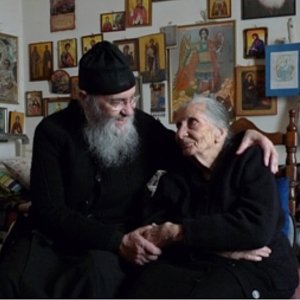In our blog you can find articles with useful information about the Garden of Virgin Mary, the Monasteries, Cells and Sketes, the routes, but also how to visit Holy Mount Athos. In addition, here you will find authentic monastic recipes, fasting and healthy, as well as prayers for various occasions!

What is the Triodion The term ‘Triodion’ has a double definition. On one hand, ‘Triodion’ denotes the liturgical book of the Church, containing hymns with three odes, that are chanted during the period before the Resurrection. On the other hand, ‘Triodion’ is also called the movable period of the...

Nowadays, mothers, as Virgin Mary did, ‘offer’ their newborn child to the church and to God, when forty days have passed since birth. This act symbolises the Churching of Jesus Christ. Also, the mother goes through the narthex and is blessed for the cleansing by her puerperium. In this way, the path to baptism of the infant is opened, welcoming the child into Christian life and facilitating the mother’s return to the ecclesiastical community.

The Feast of the Presentation is celebrated on February 2nd, as it is the fortieth day from December 25th, when Jesus Christ was born. Our Church honors the Meeting of our Lord in the Temple as an extraordinary feast. Joyful hymns are sung from February 2 to 9, in order to bind the holy event and spread joy and hope throughout the world.

John's work was not only to prophesy the coming of the Messiah but also to prepare the souls of believers. After listening to him intently, then they would confess their sins to him and he would baptize them in the Jordan River as a sign of repentance. Later, Jesus Christ approached him and asked him to be baptized. John, filled with awe and wonder, hesitated, but Jesus urged him to follow the Old Testament scriptures. Thus, John became a baptist of Christ himself, but also a witness to this supreme event.

Carols are one of the most timeless customs in many regions. They are usually associated with celebrations of the Twelve Days, that is Christmas, New Year and Epiphany. Essentially, the carols are folk songs and their lyrics express customs that are passed down from generation to generation and are sung even today.

"Three Kings of Orient" stands as a timeless Christmas carol penned by John Henry Hopkins Jr. in 1857. Also, the Carols of Epiphany is a nationwide custom in Greece and is mainly sung by children on the eve of the feast of Theophany. There are many variations in the verses depending on the region, but most carols begin with the verses "Today is the Lights and the enlightment/ The happiness is big and the sanctification...".

The "Holy Epiphany" or "Theophany" or "Eve of Lights" was established in the 2nd century AD and thus it is one of the oldest celebrations of Christianity. The message of this feast is the rebirth of Jesus Christ. In his baptism, Christ made the waters holy, so that they could be transformed into "a gift of sanctification, a removal of sins, a reducer of diseases, a destroyer of demons, inaccessible to the powers that be". Theophany refers to the manifestation of the three persons of the Holy Trinity at the baptism of Jesus Christ and is therefore called Theophany (from Greek Θεο-φάνεια, “appearance of God”).

It is the first day of the year / Rosemary trees stand tall and near / We start, we start our year congenial / in our ho..., in our holy, white cathedral. / In the beginning, Christ came down. / The Holy Spiritual One. / On earth, on earth He walked amid us. / To our hearts, to our hearts great joy He bid us.

During preparation of the Eucharist, the priest conducts the proskomithi in which he first cuts out the center of the stamped design that says "IC,XC, NIKA" (Jesus Christ Conquers). It becomes the Body of Christ (the Lamb). Then the large triangle on the left is cut in honor of the Virgin Mary. The nine small triangles on the right are cut to commemorate the angels, prophets, apostles, holy fathers and prelates, martyrs, ascetics, holy unmercenaries, Joachim and Anna, and all saints, including the saint of the day's liturgy. The last cuts are tiny squares to remember specific names of the living and the dead

The period of Great Lent dates back to the 4th century AD and constitutes the oldest fast of the Orthodox Church. During Lent, the faithful prepare themselves spiritually and physically for the great event of the Resurrection of our Lord Jesus Christ. The fasting that is followed during Great Lent is strict, with specific rules, as well as some exceptions. During the fasting period of Great Lent, the consumption of meat and fish is prohibited, as well as all dairy products. Additionally, eggs, wine and oil are also prohibited.

In the Orthodox Synaxarion, there are several female Saints, who were also mothers. Mother Saints are a characteristic example of christian love, spiritual strength, and patience. Throughout their lives, they carried out a huge Christian work, stood by their family and sacrificed themselves for their faith and children. Furthermore, these mothers serve as a shining example for families today and reveal the power of motherhood and the upbringing of children on the path of the Lord. Through the lives of the Holy Mothers, the value of faith and boundless love for the Lord Jesus Christ and the family is raised.

Quotes and teachings for the everyday life from Gerontissa Galaktia. Her teachings are simple and practical, yet distillations of holy wisdom and grace. Eldress' legacy and the testimonies of people who met her are collected in the new book about her life.